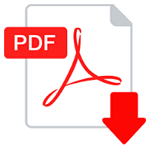PLENARY SPEAKERS
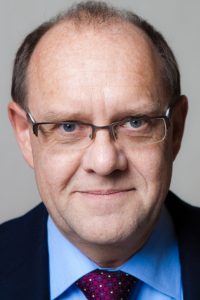
Prof. Dr. Jürgen Eckert
Erich Schmid Institute of Materials Science (Austrian Academy of Sciences) and Department Materials Physics (Montanuniversitat Leoben), Austria
Structure modulation and nanocrystallization of metallic glasses: how to tune mechanical properties
Earlier in his career, he was Full Professor at Darmstadt University of Technology, Germany (2003 to 2006), and before held positions at IFW Dresden, industry and in the United States at California Institute of Technology. He studied Materials Science at the University of Erlangen-Nuremberg, Germany and received his PhD from the same University. His major research areas are materials physics, metastable materials, structure and property correlations and structural and physical properties of advanced materials. Jürgen Eckert is a corresponding Member of the Austrian Academy of Sciences, a Member of the European Academy of Sciences, and Fellow of the Materials Research Society (MRS). He received the Gottfried Wilhelm Leibniz Award of the German Research Foundation, the DGM Prize of the Deutsche Gesellschaft für Materialkunde (DGM), an ERC-Advanced Grant of the European Research Council, the ISMANAM Senior Scientist Award, the Hsun Lee Lecture Award of the Chinese Academy of Sciences, the DGM Georg-Sachs-Prize, and the FEMS Materials Science. He is coauthor of more than 1100 scientific papers and has presented numerous invited and plenary talks at international conferences. In addition, he holds more than 20 patents in the areas of materials science and processing technology.

Prof. Michael Farle
Faculty of Physics, Universitat Duisburg-Essen, Duisburg, Germany
Smart magnetism: nanomaterials design for friction less transport, refrigeration, and theranostics
Michael Farle received his Diploma in experimental physics, Doctorate, and Habilitation degrees from Freie Universität Berlin in 1984, 1989, and 1998, respectively. During this time he spent three and a half years as a senior researcher at Stanford University, California, and Université de Strasbourg, France. In 1999, he moved to Technische Universität Braunschweig, Germany, where he became a full professor. Since 2002, he has been working as a professor at the Universität Duisburg-Essen, Germany, where he also served as Vice-Rector for Research and Junior Scientific Staff.
He coordinated two European Research Networks and served as the vice-spokesman of the Collaborative Research Center: Magnetic Heterostructures (SFB 491). 2014-2017 he was the chairman of the Magnetism Section of the German Physical Society. For many years he has been active on the program committees of several international conferences on magnetism. He is a Distinguished Lecturer 2017 of the IEEE Magnetics Society, and a member of the German Physical Society.

Dr. Vincenzo Palermo
Institute for Organic Synthesis and Photoreactivity-ISOF, National Research Council, Italy
Self assembly of carbon-based materials from nano-to macro-scale: when enemies become friends
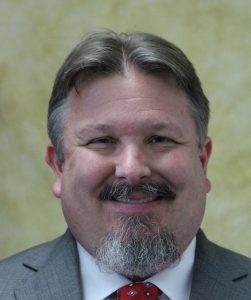
Prof. Paul Voyles
Department of Materials Science and Engineering, University of Wisconsin, USA
Heterogeneous Dynamics of Metallic Glass-forming Liquids
KEYNOTE SPEAKERS

Prof. Chiara Maccato
Padova University (Italy)
H2 Photo-generation promoted by iron oxide nanoarchitectures prepared by CVD-Based approaches
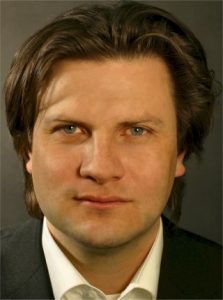
Prof. Alfred Ludwig
Institute for Materials, Ruhr-University Bochum, Bochum, Germany
Combinatorial and high-throughput methods for the investigation of novel materials
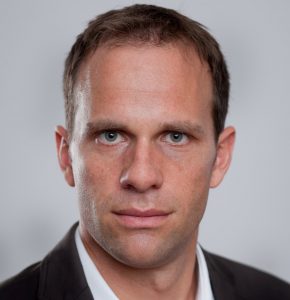
Prof. Dieter Suess
Institute of Solid State Physics, Vienna University of Technology, Wien, Austria
Applications and potential of 3D printing: from polymers to magnetic solid state materials
Dieter Suess was born 1975 in Vienna. He studied at the Vienna University of Technology from 1994 to 1999 and completed his dissertation “Micromagnetic Simulations of Antiferro-and Ferromagnetic Structures for Magnetic Recording” in 2002, which was partly conducted in Perth (Australia). In the summer of 2006, he worked as a consultant at Komag (now Western Digital) in San Jose (California) to support the product realisation of the “Exchange Spring Media” concept he proposed for hard disks, which has now been used in commercial hard disks since 2007. In June 2007, Dieter Suess completed his habilitation in Computational Materials Science at the Vienna University of Technology. Since 2008 he has been project leader of several FWF, WWTF and company projects and since June 2013 he has been head of the Christian Doppler Laboratory “Advanced Magnetic Sensing and Materials” with a total project volume of approximately 5 million euros.
Since March 2018 Dr. Suess is Professor at the Functional Materials Group at the University of Vienna.
Dieter Suess has published around 200 papers in scientific journals. In his research he deals with magnetization dynamics and thermal activations in magnetic materials with a special focus on applications for memory and sensors, spintronics up to 3D printing of magnets.
In 2006 D. Suess funded the start-up company SuessCo Simulations developing magnetic software and in 2018 the company SuessCo Sensors Gmbh.

OUTREACH EVENT – Prof. Luca Bindi
Dipartimento di Scienze della Terra, Università di Firenze, Via La Pira 4, I-50121 Firenze, Italy
Once upon a time in Kamchatka: The extraordinary search for natural quasicrystals
Luca Bindi (born 1971) is an Italian geologist. He currently holds the Chair of Mineralogy and Crystallography in the Department of Earth Sciences in the University of Florence. He is also a research associate at the Istituto di Geoscienze e Georisorse of the National Research Council (Italy) (CNR). He has received national and international scientific awards that include the President of the Republic Prize 2015 in the category of Physical, Mathematical and Natural Sciences in the National Academy of Lincei.
He discovered natural quasicrystals in 2009, showing that quasicrystals can form spontaneously in nature and remain stable for geological times.
Two of his scientific works related to the discovery of the first natural quasicrystal, icosahedrite, were cited in Scientific Background on the Nobel Prize in Chemistry 2011 – The Discovery of Quasicrystals of the Nobel Committee for Chemistry of the Royal Swedish Academy of Sciences. On 29 May 2018, the asteroid 92279 Bindiluca was named in his honor.
Bindi has numerous international collaborations, especially with Princeton University, Harvard University, and the California Institute of Technology.
His research activity resulted in 250 scientific publications in international journals, mainly covering crystallographic structural studies of minerals characterized by incommensurate structures, superstructures, twinning, and integrating mineralogy with the most-advanced fields of crystallography. Significant among his research works are the crystal-chemical studies of major mineral phases for the Earth’s mantle, and studies of potassium-rich clinopyroxene, which had broad international resonance.






